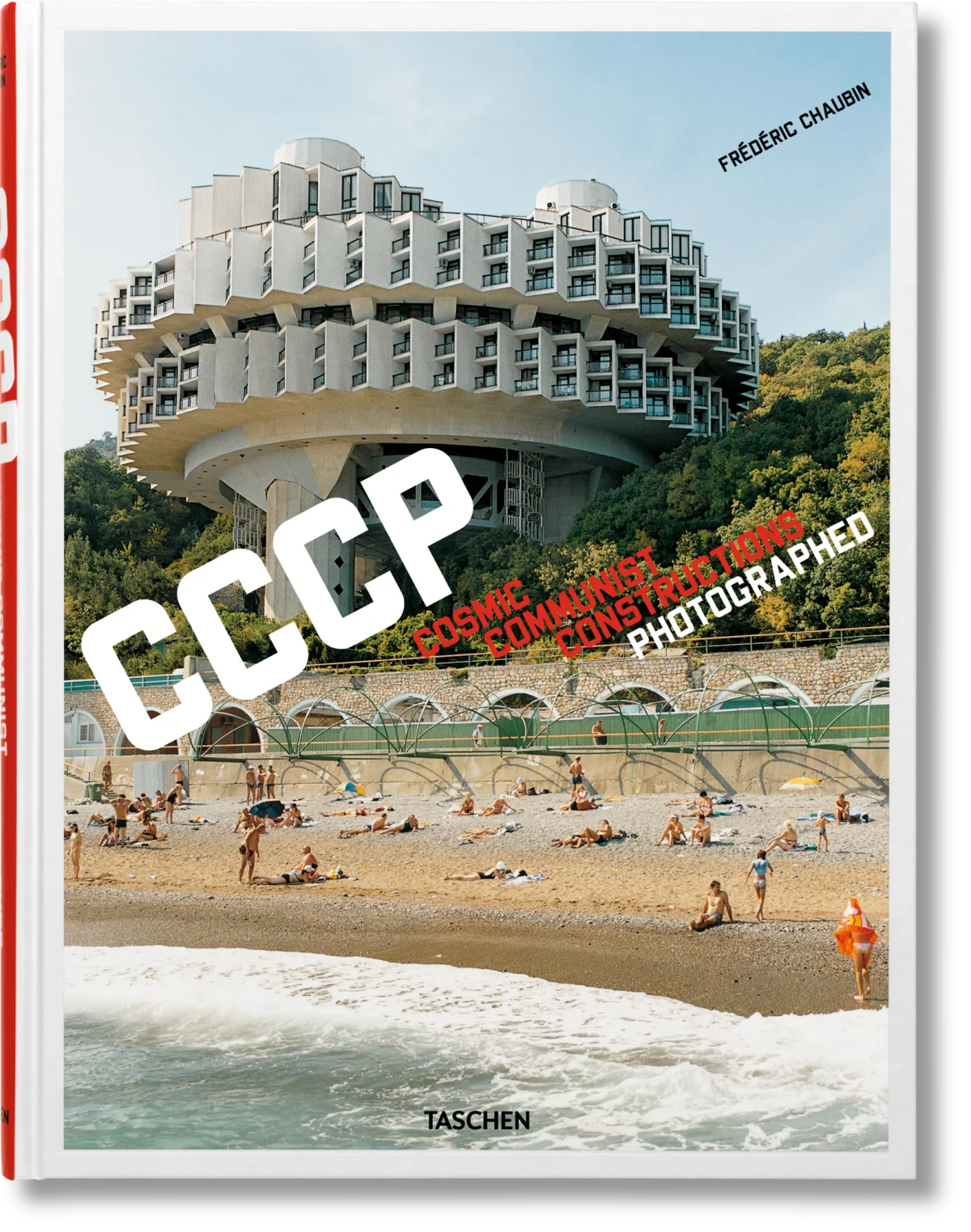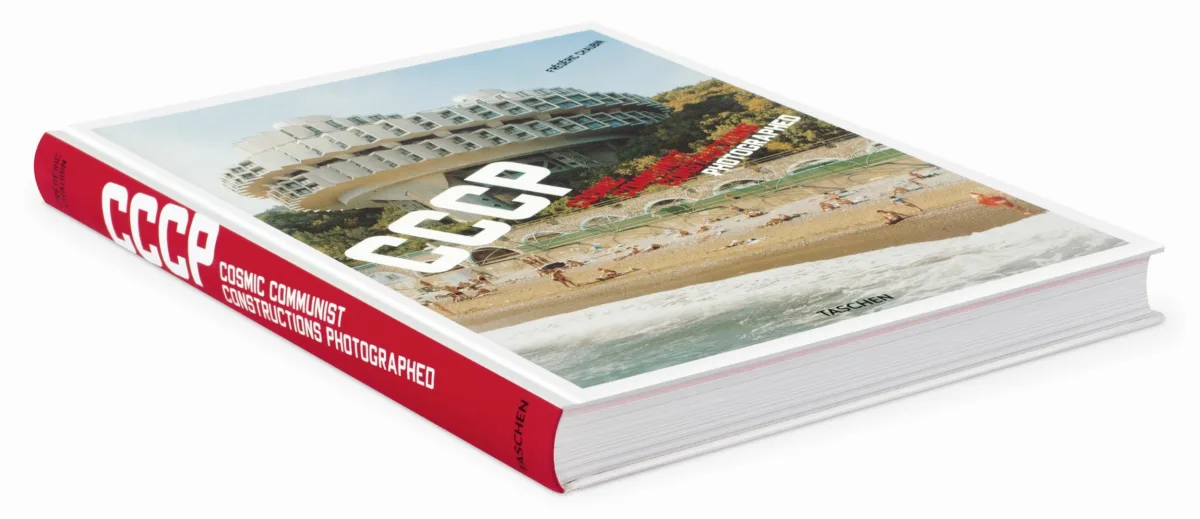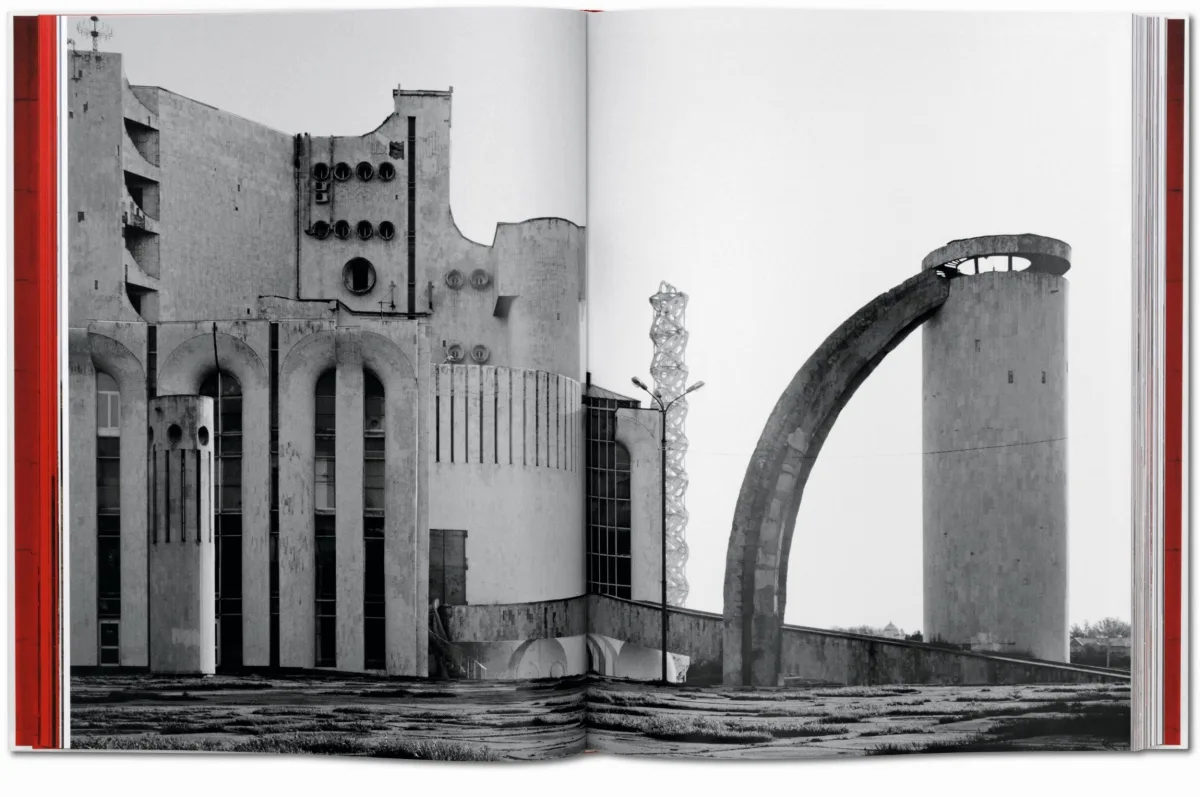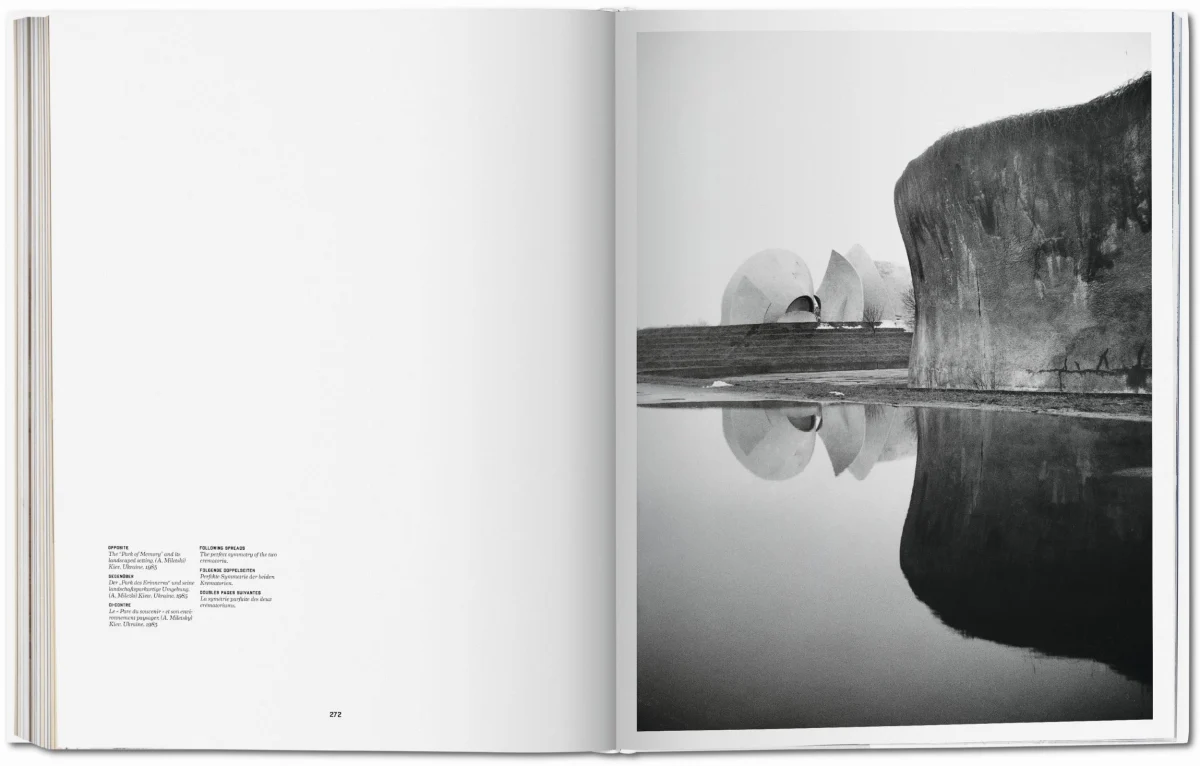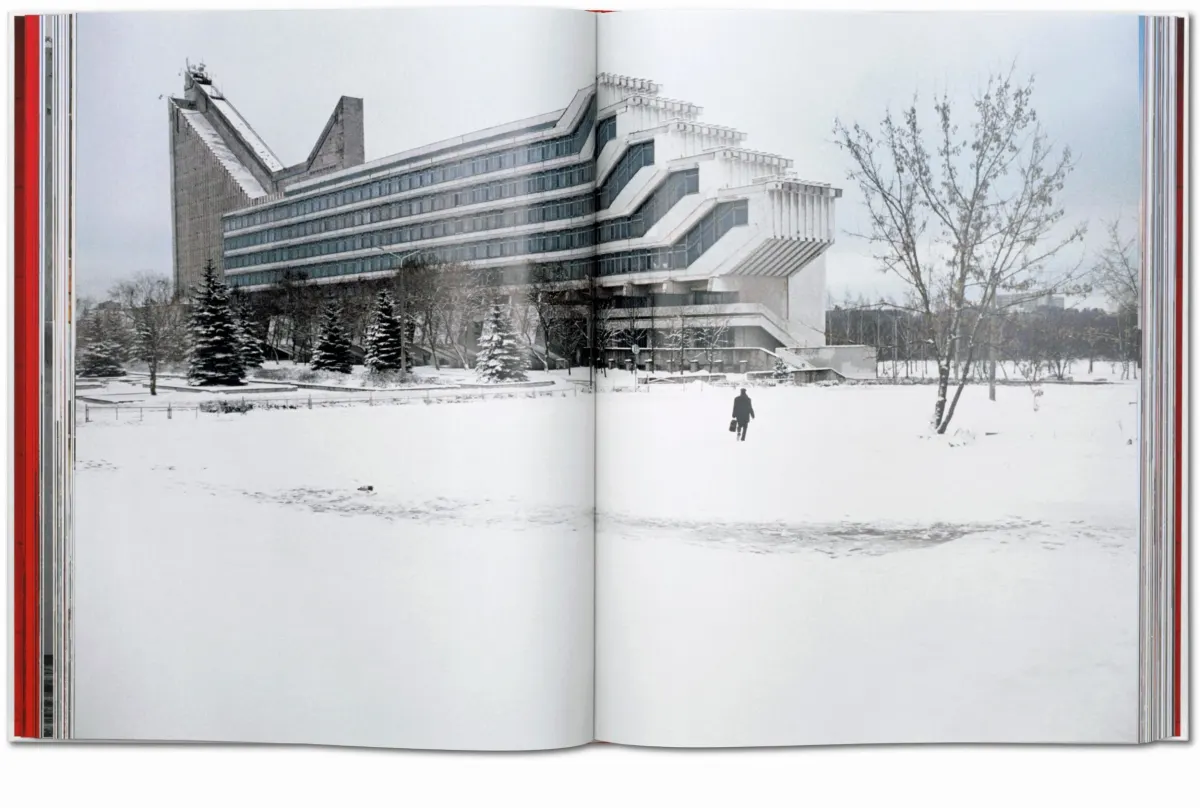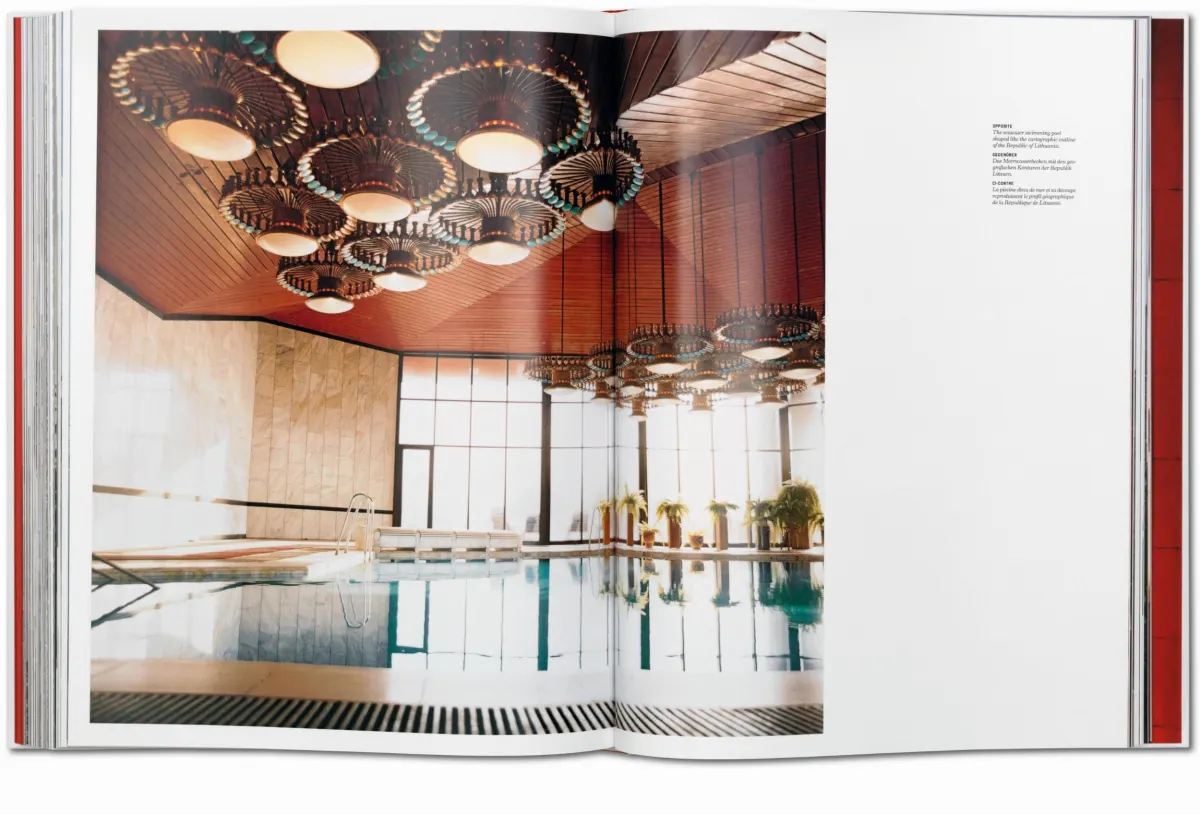1 / 7
XL
I libri XL hanno un'altezza minima di 34 cm, ad eccezione dei titoli in formato orizzontale.
Frédéric Chaubin. CCCP. Cosmic Communist Constructions Photographed
70
Nelle immagini di Frédéric Chaubin domina la bellezza brutale dell'architettura sovietica estrema degli ultimi anni dell'URSS. In queste fotografie esploriamo il mondo scomparso delle strutture totalitarie, originariamente progettate per dominare ed esercitare un potere onnisciente sui civili attraverso forme spettacolari e un'estetica austera.
Copertina rigida, 10.2 x 13.4 in., 5.87 lb, 312 pagine
XL
I libri XL hanno un'altezza minima di 34 cm, ad eccezione dei titoli in formato orizzontale.

Frédéric Chaubin. CCCP. Cosmic Communist Constructions Photographed
70Brutalist Beauties
Architectural remnants of the USSR
Elected the architectural book of the year by the International Artbook and Film Festival in Perpignan, France, Frédéric Chaubin’s Cosmic Communist Constructions Photographed explores 90 buildings in 14 former Soviet Republics. Each of these structures expresses what Chaubin considers the fourth age of Soviet architecture, an unknown burgeoning that took place from 1970 until 1990.
Contrary to the 1920s and 1950s, no “school” or main trend emerges here. These buildings represent a chaotic impulse brought about by a decaying system. Taking advantage of the collapsing monolithic structure, architects went far beyond modernism, going back to the roots or freely innovating. Some of the daring ones completed projects that the Constructivists would have dreamt of (Druzhba Sanatorium, Yalta), others expressed their imagination in an expressionist way (Palace of Weddings, Tbilisi).
A summer camp, inspired by sketches of a prototype lunar base, lays claim to Suprematist influence (Prometheus youth camp, Bogatyr). Then comes the “speaking architecture” widespread in the last years of the USSR: a crematorium adorned with concrete flames (Crematorium, Kiev), a technological institute with a flying saucer crashed on the roof (Institute of Scientific Research, Kiev), a political center watching you like Big Brother (House of Soviets, Kaliningrad).
In their puzzle of styles, their outlandish strategies, these buildings are extraordinary remnants of a collapsing system. In their diversity and local exoticism, they testify both to the vast geography of the USSR and its encroaching end of the Soviet Union, the holes in a widening net. At the same time, they immortalize many of the ideological dreams of the country and its time, from an obsession with the cosmos to the rebirth of identity.
Contrary to the 1920s and 1950s, no “school” or main trend emerges here. These buildings represent a chaotic impulse brought about by a decaying system. Taking advantage of the collapsing monolithic structure, architects went far beyond modernism, going back to the roots or freely innovating. Some of the daring ones completed projects that the Constructivists would have dreamt of (Druzhba Sanatorium, Yalta), others expressed their imagination in an expressionist way (Palace of Weddings, Tbilisi).
A summer camp, inspired by sketches of a prototype lunar base, lays claim to Suprematist influence (Prometheus youth camp, Bogatyr). Then comes the “speaking architecture” widespread in the last years of the USSR: a crematorium adorned with concrete flames (Crematorium, Kiev), a technological institute with a flying saucer crashed on the roof (Institute of Scientific Research, Kiev), a political center watching you like Big Brother (House of Soviets, Kaliningrad).
In their puzzle of styles, their outlandish strategies, these buildings are extraordinary remnants of a collapsing system. In their diversity and local exoticism, they testify both to the vast geography of the USSR and its encroaching end of the Soviet Union, the holes in a widening net. At the same time, they immortalize many of the ideological dreams of the country and its time, from an obsession with the cosmos to the rebirth of identity.
Il fotografo
Frédéric Chaubin was the editor-in-chief of the French lifestyle magazine Citizen K for twenty years. Since 2000, he has regularly published works on architecture, combining text and photography, and presented accompanying exhibitions and lectures. He approaches his architectural research through a historical lens. After his CCCP collection research, published in 2011, he has delved into the remains of the medieval world, with his TASCHEN title Stone Age. Ancient Castles of Europe.
Frédéric Chaubin. CCCP. Cosmic Communist Constructions Photographed
Copertina rigida, 26 x 34 cm, 2.66 kg, 312 pagineISBN 978-3-8365-2519-0
Edizione: Multilingue (Francese, Inglese, Tedesco)Scarica qui le immagini del prodotto
4.9
17 febbraio 2024
Amazing product.
Beautiful book and photos.
SUPER WELL wrapped and protected!Amazing book
1 settembre 2023
An essential treasure for those who love architecture and East Europe. The XL size makes the book even greater.Kolossale Architektur
10 dicembre 2021
Tolles, gut recherchiertes Buch über ein wenig bekanntes Terrain. Hochwertige Verarbeitung mit vielen richtig gut fotografierten Bildern. Eine Entdeckung!The soviet myth
7 novembre 2021
The book is not just a collection of impressive photos. Divided into chapters, enriched with a text, combining photos of the time with recent photos, it clearly restores the impression of the myth sustained beyond all reasonableness, of the grandeur of Soviet ideology. An unusual, rich, poignant, magnificent book.Rivelazione
6 novembre 2021
Francamente non conoscevo queste opere, alcune delle quali dei veri e propri gioielli a mio avviso, presenti nella fredda unione sovietica. Libro ispiratore e formativo.Beautiful
5 novembre 2021
The book is very interesting to look at all these photos - there are pictures of Soviet architectural buildings of different periods and styles, scattered in different countries , which previously formed part of the Soviet Union. I really like the aesthetics of the architecture displayed in the book. Overall really cool.
